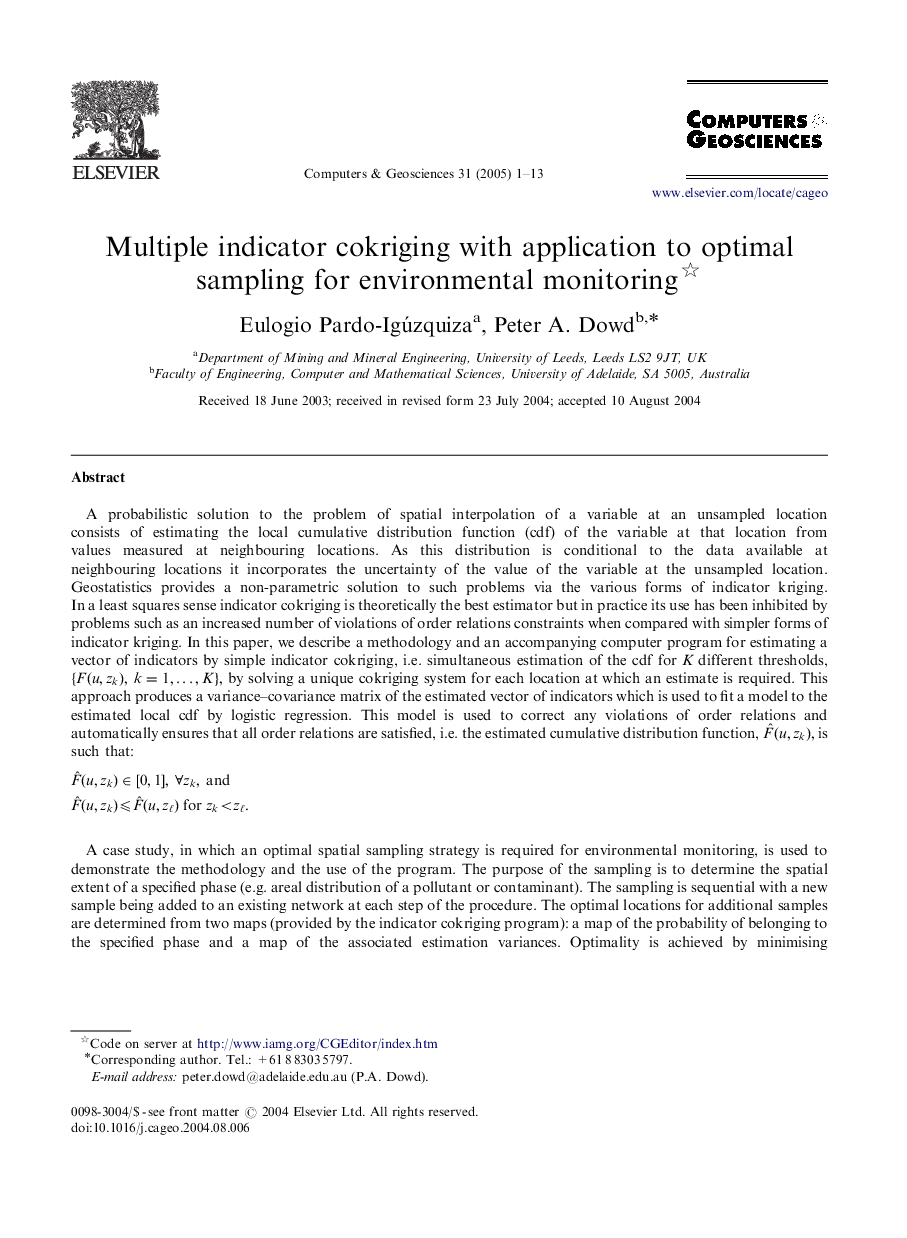| Article ID | Journal | Published Year | Pages | File Type |
|---|---|---|---|---|
| 10352920 | Computers & Geosciences | 2005 | 13 Pages |
Abstract
A case study, in which an optimal spatial sampling strategy is required for environmental monitoring, is used to demonstrate the methodology and the use of the program. The purpose of the sampling is to determine the spatial extent of a specified phase (e.g. areal distribution of a pollutant or contaminant). The sampling is sequential with a new sample being added to an existing network at each step of the procedure. The optimal locations for additional samples are determined from two maps (provided by the indicator cokriging program): a map of the probability of belonging to the specified phase and a map of the associated estimation variances. Optimality is achieved by minimising simultaneously the uncertainty of belonging to the phase and the variance of the error of estimating the uncertainty, thus guaranteeing that maximum information is gained from additional samples.
Keywords
Related Topics
Physical Sciences and Engineering
Computer Science
Computer Science Applications
Authors
Eulogio Pardo-Igúzquiza, Peter A. Dowd,
